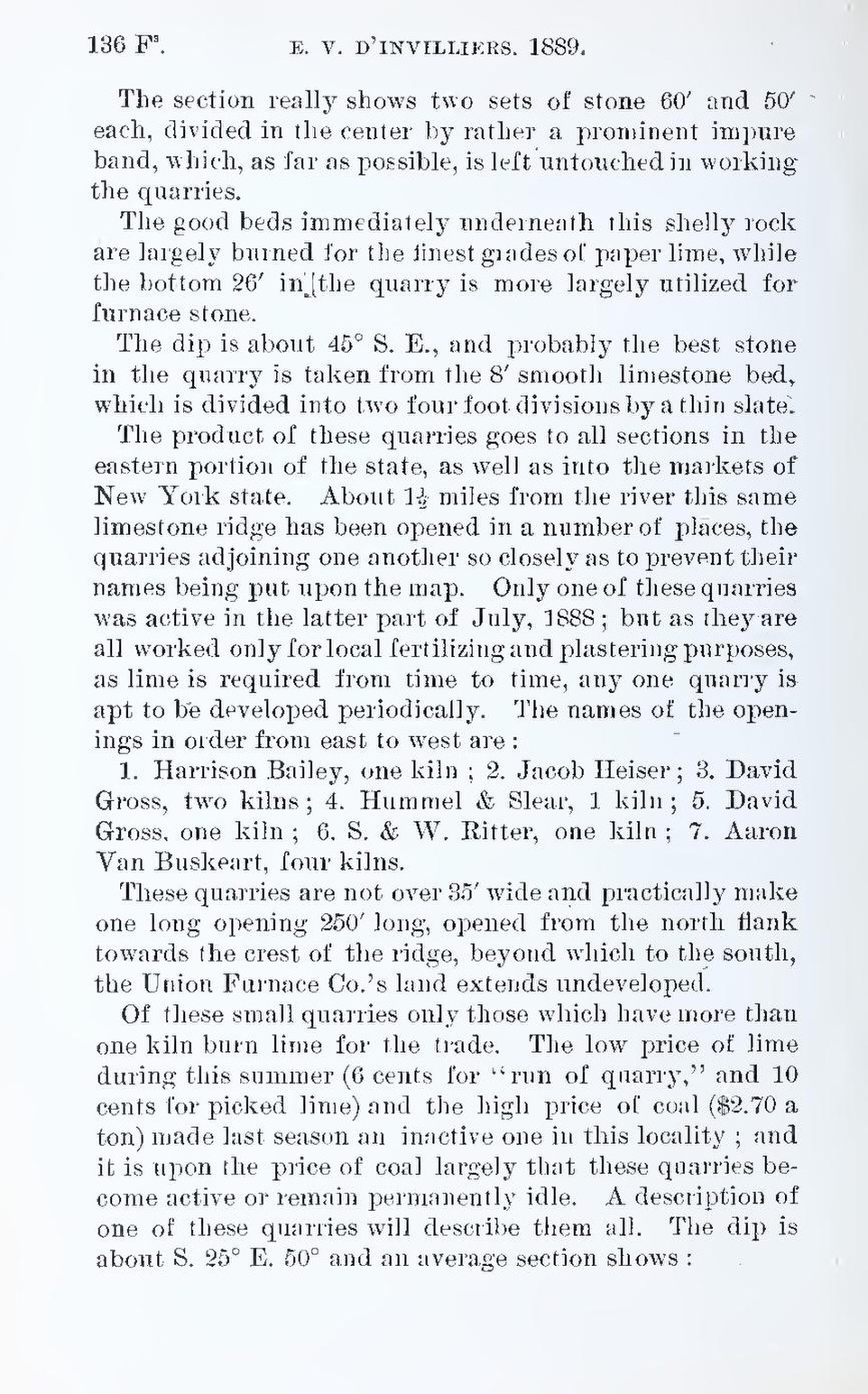The section really shows two sets of stone 60′ and 50′ each, divided in the center by rather a prominent impure band, which, as far as possible, is left untouched in working the quarries.
The good beds immediately underneath this shelly rock are largely burned for the finest grades of paper lime, while the bottom 26′ in the quarry is more largely utilized for furnace stone.
The dip is about 45° S. E., and probably the best stone in the quarry is taken from the 8′ smooth limestone bed, which is divided into two four foot divisions by a thin slate.
The product of these quarries goes to all sections in the eastern portion of the state, as well as into the markets of New York state. About 1½ miles from the river this same limestone ridge has been opened in a number of places, the quarries adjoining one another so closely as to prevent their names being put upon the map. Only one of these quarries was active in the latter part of July, 1888; but as they are all worked only for local fertilizing and plastering purposes, as lime is required from time to time, any one quarry is apt to be developed periodically. The names of the openings in order from east to west are:
1. Harrison Bailey, one kiln; 2. Jacob Heiser; 3. David Gross, two kilns; 4. Hummel & Slear, 1 kiln; 5. David Gross, one kiln; 6. S. & W. Ritter, one kiln; 7. Aaron Van Buskeart, four kilns.
These quarries are not over 35′ wide and practically make one long opening 250′ long, opened from the north flank towards the crest of the ridge, beyond which to the south, the Union Furnace Co.’s land extends undeveloped.
Of these small quarries only those which have more than one kiln burn lime for the trade. The low price of lime during this summer (6 cents for “run of quarry,” and 10 cents for picked lime) and the high price of coal ($2.70 a ton) made last season an inactive one in this locality; and it is upon the price of coal largely that these quarries become active or remain permanently idle. A description of one of these quarries will describe them all. The dip is about S. 25° E. 50° and an average section shows:
